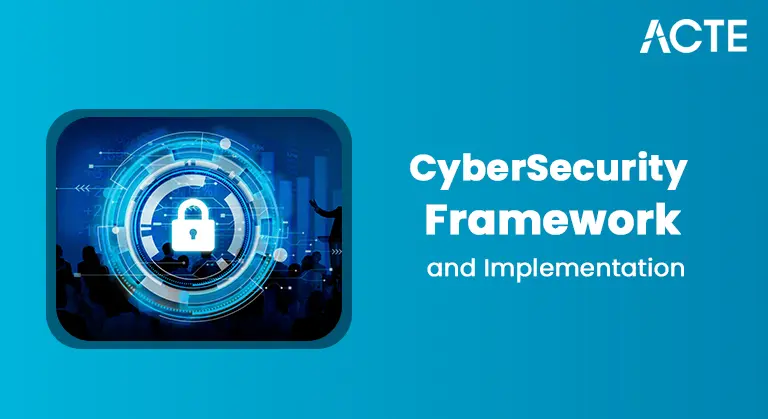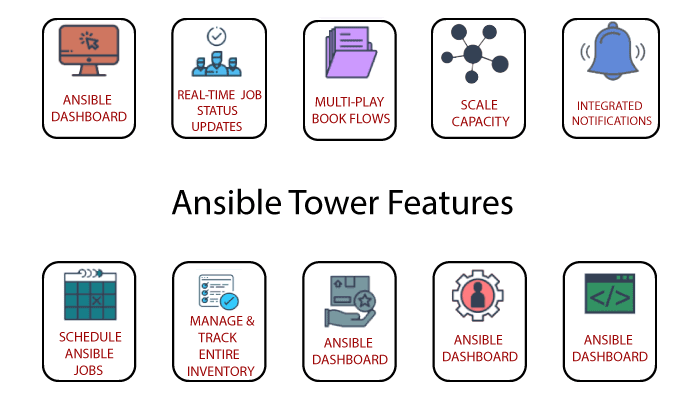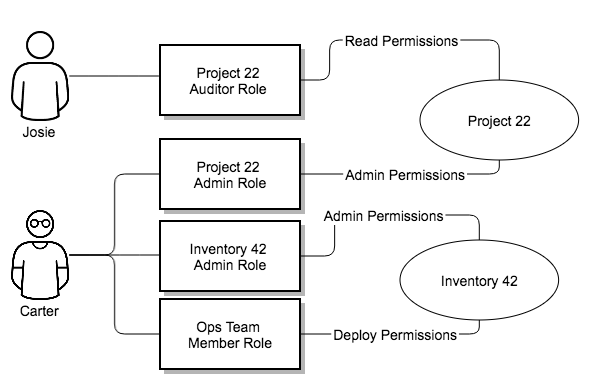
- Introduction to Ansible Tower
- Key Features and Benefits
- Installing and Setting Up Ansible Tower
- Managing Inventories and Credentials
- Role-Based Access Control (RBAC) in Ansible Tower
- Automating Workflows with Ansible Tower
- Integrating Ansible Tower with CI/CD Pipelines
- Monitoring and Troubleshooting Ansible Tower
- Conclusion
Introduction to Ansible Tower
Ansible Tower is a web-based user interface and dashboard for managing and scaling automation with Ansible. Ansible is a powerful open-source IT tool for configuration management, application deployment, task automation, and IT orchestration. Ansible Tower builds on this foundation, providing an enterprise-grade solution that is easier to use, scale, and manage for larger teams and organizations. Devops Training extends Ansible’s capabilities by offering features like role-based access control, job scheduling, visual inventory management, and a RESTful API for integration with other systems.As businesses grow and their IT infrastructures become more complex, Ansible Tower allows teams to scale automation efforts, manage users, and improve visibility into automation jobs. It provides a single platform to manage your automation workflows, reducing complexity and improving productivity.With Ansible Tower, administrators can manage multiple systems, networks, and devices from a central location, streamlining tasks previously done manually or with numerous disparate tools. The platform enhances the automation experience and enables teams to work more efficiently, ensuring the automation process is transparent, secure, and scalable.
Key Features and Benefits of Ansible Tower
- Web-Based Interface The web-based UI of Ansible Tower provides users with a clean, intuitive dashboard to manage all their automation processes. An Overview of Mulesoft Anypoint simplifies the management of inventories, playbooks, and job templates. This interface ensures that technical and non-technical users can easily navigate and execute automation tasks.
- Role-Based Access Control (RBAC) Ansible Tower integrates role-based access control, allowing you to define roles and assign permissions to specific users or groups. This ensures that only authorized individuals can change your environment, critical for maintaining security in larger teams or organizations.
- Job Scheduling and Workflow Automation Ansible Tower enables users to schedule automation jobs for specific times or intervals. It also supports workflows, which allow you to combine multiple jobs to automate complex processes. For example, you can schedule a backup job and follow it with a deployment or configuration task.
- Centralized Logging and Monitoring Ansible Tower provides centralized logging and job status monitoring. It allows users to track and view real-time logs of all automation jobs and their status. In the event of a failure, detailed logs can help administrators troubleshoot and resolve issues quickly.
- Integration with External Systems Ansible Tower provides a RESTful API that enables integration with external systems, including CI/CD pipelines, monitoring tools, and other IT management platforms. Citrix Xenserver vs Vmware vsphere allows organizations to automate and orchestrate tasks beyond Ansible’s core scope.
- Multi-Platform Support Ansible Tower supports various platforms and environments, making it an ideal choice for heterogeneous infrastructures. It can manage servers running on Linux, Windows, and cloud platforms like AWS, Azure, and Google Cloud, allowing you to automate cross-platform tasks.
- Scaling and Clustering Ansible Tower is designed to scale with your infrastructure. It supports a clustered architecture, meaning multiple instances of Tower can work together to manage large, distributed environments.It clustering feature ensures high availability and increased performance as the number of managed nodes grows.
- A supported operating system (Red Hat Enterprise Linux or CentOS 7.x/8.x)
- At least 2 GB of RAM (4 GB recommended)
- At least 20 GB of disk space
- Python 3.x
- A compatible version of Ansible (usually the latest stable version) Download and Install Ansible Tower:
- curl -O
- https://releases.ansible.com/ansible-tower/setup/ansible-tower-setup-latest.tar.gz
- tar -zxvf ansible-tower-setup-latest.tar.gz
- cd ansible-tower-setup-*
- sudo ./setup.sh
- Username: admin
- Password: (set during installation)
- Go to the Inventories section in the web interface.
- Click on Add and select the type of inventory you want to create.
- Add the hosts manually for a static inventory. For dynamic inventories, configure the necessary plugin and credentials to pull the data. Credentials:
- Navigate to the Credentials tab in the web interface.
- Click Add and select the type of credential you want to create (SSH, cloud provider, etc.).
- Provide details like username, password, private keys, and other authentication information.
- Triggering Jobs from CI/CD You can trigger Ansible Tower jobs from your CI/CD pipeline using webhooks, APIs, or plugin integrations. For example, Jenkins can trigger an Cloud Computing Skills for Career Growth job to deploy an application after a successful build. This integration ensures that infrastructure changes are always in sync with application updates.
- Updating Infrastructure as Code Integrating Ansible Tower with a CI/CD pipeline allows you to treat your infrastructure as code. Every change to your infrastructure (e.g., scaling a web server or modifying a database) can be tracked, versioned, and automated as part of your development lifecycle.
- Job Monitoring The web interface provides detailed logs for Introduction To Infrastructure as Code IAC. You can see The status of each task, Any failed tasks or errors and Detailed output for debugging purposes.
- Audit and Log Management Ansible Tower maintains an audit log of all platform activities, including user actions, job runs, and system changes. By reviewing the audit logs, you can trace issues back to specific system actions or changes. For more complex issues, you can check Tower’s logs (e.g., system and application logs) for errors or performance bottlenecks.
- Health Checks and Alerts Ansible Tower also allows you to set up health checks and alerts for system performance. You can monitor CPU, memory, and disk usage and receive notifications if these metrics exceed certain thresholds.
Ansible Tower offers several key features and benefits, making it a preferred choice for enterprise-grade automation management. Some of these features include:

Start your journey in Devops by enrolling in this Devops Online Course .
Installing and Setting Up Ansible Tower
Installing Ansible Tower requires several steps to prepare your system and environment for deployment. Here’s a general guide to installing and setting up Ansible Tower:
-
System Requirements:
Before installing Ansible Tower, ensure that your system meets the following requirements:
The installation of Ansible Tower is typically done via a package or script provided by Red Hat (the company behind Ansible Tower). An installer script automates the Introduction To Cloud Storage its Benefits of tasks, simplifying the installation process.
Here’s a simplified example of the installation steps:
Download the latest version of Ansible Tower:
Extract the installation package:
Navigate into the extracted directory and run the installer:
The installation script will prompt you for configuration details like database and admin credentials.
Access the Web Interface:Once the installation is complete, you can access the Ansible Tower web interface by navigating to the server’s IP address o Seamless Cloud Migration Guide in a web browser.
The default admin credentials are:
Gain in-depth knowledge of Devops by joining this Devops Online Course now.
Managing Inventories and Credentials in Ansible Tower
One of the core features of Ansible Tower is its ability to manage inventories and credentials securely. Here’s how you can manage these two components:
Inventories:An inventory in Ansible Tower is a collection of hosts you want to manage. These can be static or dynamic inventories. Static inventories consist of predefined lists of hosts, while dynamic inventories pull host information from external sources, such as cloud environments or asset management systems.
To create an inventory in Ansible Tower:
Credentials in Ansible Tower are used to Devops Training and authorize actions on your managed systems. These credentials can be used for SSH access, API tokens, cloud provider authentication, etc.
To add credentials in Ansible Tower:
You can also assign these credentials to specific inventories or projects.
Role-Based Access Control (RBAC) in Ansible Tower
RBAC (Role-Based Access Control) is a vital feature in Ansible Tower that enables administrators to manage user permissions and roles within the platform. It ensures that only authorized users can perform specific tasks, enhancing security and providing greater control over Practices and Tools in Devops. Ansible Tower offers several built-in roles, including Admin (full access to the entire platform), User (can view and run jobs with limited configuration capabilities), and Auditor (can view jobs and job results but cannot execute tasks). Additionally, administrators can create custom roles and assign permissions based on specific needs. To assign a role, navigate to the Users or Teams tab, select the user or team, and then choose the appropriate role from the dropdown. This approach ensures that users only have the permissions necessary for their tasks, reducing the risk of unauthorized access or errors.

Automating Workflows with Ansible Tower
Ansible Tower offers robust workflow automation features that enable users to design complex automation pipelines by linking multiple jobs. Job templates are predefined configurations that allow users to run specific tasks, such as provisioning a server or configuring an application. Understanding Terraform are created by selecting an inventory, playbook, and credentials. Additionally, workflows allow users to create multi-step automation pipelines by combining multiple job templates into a single workflow. This ensures tasks are executed in the correct order, and workflows can also include manual approval steps and other automated tasks. To create a workflow, simply go to the Workflows section, click Add, and define the workflow steps, linking them to existing job templates or other workflows. Workflows simplify the execution of complex automation scenarios, making them more reusable and efficient.
Aspiring to lead in Devops? Enroll in ACTE’s Devops Master Program Training Course and start your path to success!
Integrating Ansible Tower with CI/CD Pipelines
CI/CD (Continuous Integration/Continuous Deployment) pipelines are essential for modern software development practices. Ansible Tower integrates seamlessly with CI/CD tools like Jenkins, GitLab CI, and others to automate infrastructure provisioning and application deployments as part of the CI/CD lifecycle
Preparing for Devops interviews? Visit our blog for the best Devops Interview Questions and Answers!
Monitoring and Troubleshooting Ansible Tower
Monitoring and troubleshooting are critical when managing an automation platform like Ansible Tower. Ansible Tower provides several tools to monitor job status, track performance, and troubleshoot errors.
Conclusion
Ansible Tower is a comprehensive automation management platform that brings power, flexibility, and scalability to enterprise-scale automation. With features like role-based access control (RBAC), centralized job monitoring, job scheduling, and seamless integration with CI/CD (Continuous Integration/Continuous Deployment) pipelines, Ansible Tower is the ideal solution for managing IT infrastructure and automation workflows at scale. Devops Training multi-platform support, scaling and clustering capabilities, and security features allow organizations to manage diverse environments and ensure high availability. By leveraging these advanced features, businesses can streamline their operations, reduce human error, improve the efficiency of their automation processes, and enhance collaboration across teams. Ansible Tower empowers teams to orchestrate complex tasks, improve visibility, and automate repetitive processes, enabling them to focus on innovation and strategic growth.





